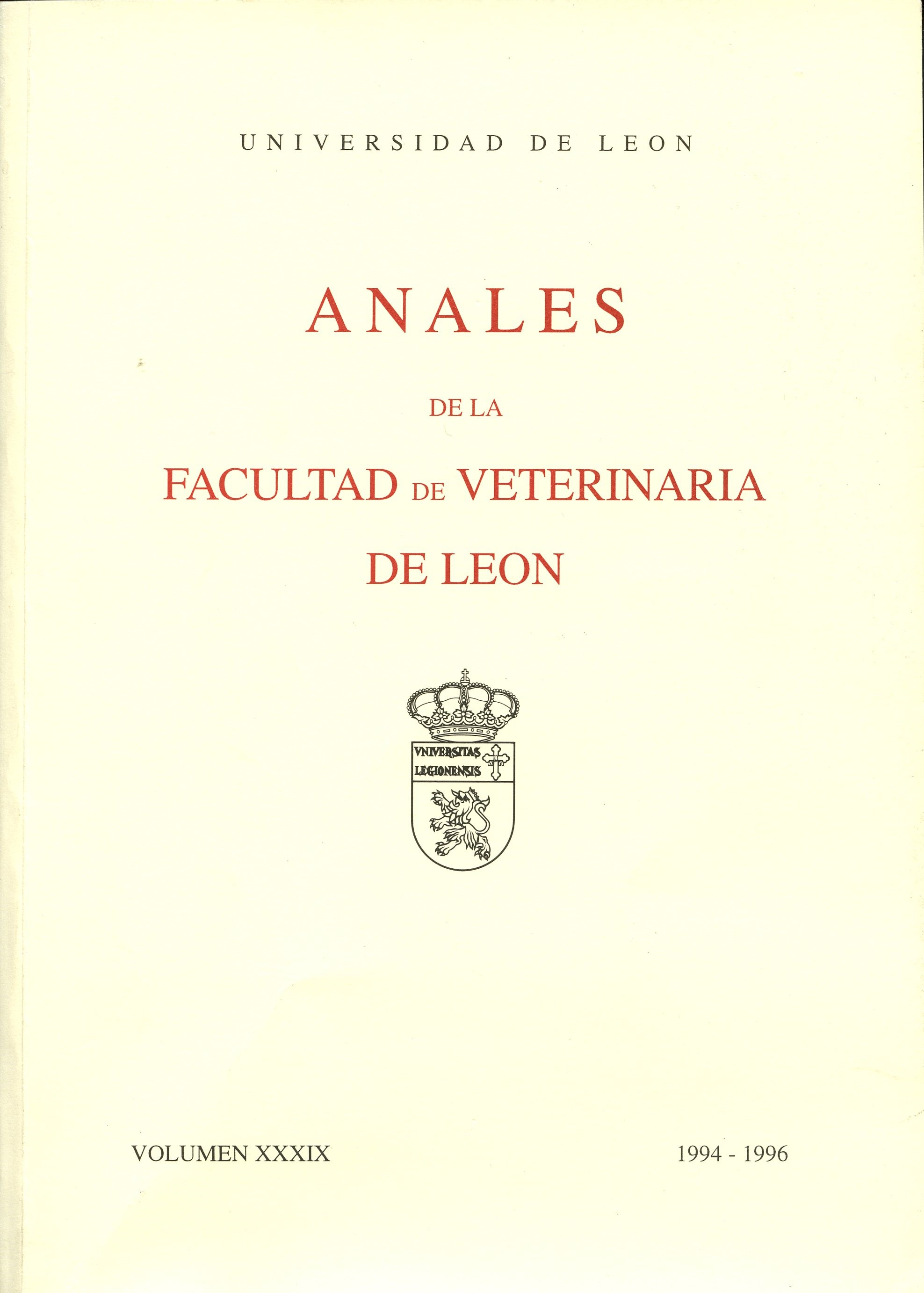Eficacia del cloruro sódico como inhibidor de Bacillus stearothermophilus
DOI:
https://doi.org/10.18002/analesdeveterinaria.v39.7846Palabras clave:
Bacillus stearothermophilus, resistencia al calor, inhibición por NaC1, esporasResumen
Se ha estudiado el efecto inhibitorio ejercido por el cloruro sódico sobre Bacillus stearothermophilus (cepas ATCC 12980, 7953, 15951 y 15952). La intensidad del efecto observado varió, tanto para los esporos no tratados como para los sometidos a la acción del calor. En el primer caso, la adición de un 3% de sal no permitió el crecimiento de la cepa 7953, mientras que las otras tres fueron capaces de formar colonias incluso tras la adición de un 6% de NaCI. El calentamiento produjo un aumento de la sensibilidad de los esporos de tal forma que, la adición de un 0,5% dio lugar a un descenso en los niveles de recuperación hallados, que disminuían progresivamente al incrementar la cantidad de sal añadida, aunque se pusieron de manifiesto diferencias entre cepas. Así, concentraciones superiores al 2% de sal no permitieron la recuperación de las cepas 7953 y 15952, mientras que fue necesario añadir para obtener este efecto al menos un 3% de sal en el caso de la cepa 15951 y un 4% para la 12980. En todos los casos, los valores D aparentes calculados descendieron progresivamente al aumentar la concentración de sal, reduciéndose en torno a un 50% al añadir el 2%. El efecto causado por la sal resultó independiente de la temperatura de tratamiento, obteniéndose valores z de 7.81°C± 0.23.Descargas
Los datos de descargas todavía no están disponibles.
Descargas
Publicado
1996-01-02
Número
Sección
Trabajos de investigación
Licencia
Derechos de autor 1996 Ana Bernardo Álvarez, Josefa González Prieto, Margarita Mazas Alberdi, Isaac González Martínez, Mercedes López Fernández

Esta obra está bajo una licencia internacional Creative Commons Atribución-NoComercial-CompartirIgual 4.0.
Los autores que publican en esta revista están de acuerdo con los siguientes términos:
- Los autores ceden de forma no exclusiva los derechos de explotación (reproducción, distribución, comunicación pública, transformación) a la Universidad de León, por lo que pueden establecer, por separado, acuerdos adicionales para la distribución no exclusiva de la versión de la obra publicada en la revista (por ejemplo, alojarlo en un repositorio institucional o publicarlo en un libro), con un reconocimiento de su publicación inicial en esta revista.
- Este trabajo se encuentra bajo la Creative Commons Attribution-NonCommercial-ShareAlike 4.0 International License. Puede consultarse desde aquí la versión informativa y el texto legal de la licencia.
- Se permite y se anima a los autores a difundir electrónicamente las versiones pre-print (versión antes de ser evaluada) y/o post-print (versión evaluada y aceptada para su publicación) de sus obras antes de su publicación, ya que favorece su circulación y difusión más temprana y con ello un posible aumento en su citación y alcance entre la comunidad académica.







